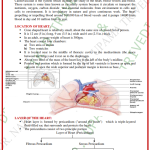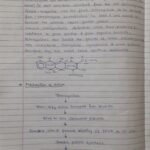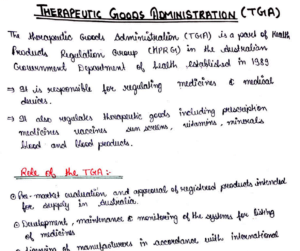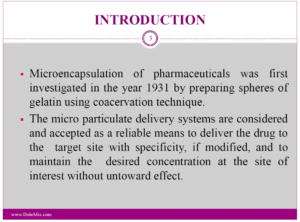Submitted by: Gaurav, M.Pharma 1st sem
(Department of pharmaceutics)
Jamia hamdard
Submitted to: DR. SANJULA BABOOTA
CONTENT
Introduction
Objectives
Definition
Need of bioequivalence
Type of equivalence
Need of in vivo studies
Statistical evaluation of bioequivalence data
Design and evaluation of bioequivalence
Types of evidence to establish bioequivalence
Evaluation of data
Biowaivers
Introduction
Bioavailability and bioequivalence studies
provides important information in overall
set of data that ensure availability of safe
and effective medicines.
The concept of bioavailability and
bioequivalence have gained during the last
three decades.
Now it is very important for approval of
brand name and generic drug worldwide
Objectives
The most important objective is to
measure and compare the formulation
performance between two or more
pharmaceutically equivalent drug
product.
Definition
By United State Food And Drug Administration(FDA): the absence
of a significant difference in the rate and extent to which the
active ingredient or active moiety in pharmaceutical equivalents
or pharmaceutical alternatives becomes available at the site of
drug action when administered at the same molar dose under
similar conditions in an appropriately designed study.
By World Health Organization (WHO):
Two pharmaceutical products are bioequivalent if they are
pharmaceutically equivalent or pharmaceutical alternatives, and
their bioavailabilities, in terms of rate (Cmax and tmax) and
extent of absorption (area under the curve), after administration
of the same molar dose under the same conditions, are similar
to such a degree that their effects can be expected to be
essentially the same
Need of bioequivalence
The need of bioequivalence studies is increasing
due to the large growth of the production and
consumption of generic product
Bioequivalence studies are conducted if there is :
A risk of bio inequivalence or
A risk of pharmacotherapeutic failure
No clinical studies have been performed in patient
with the generic product to support its efficacy and
safety
Types of equivalence
1. Chemical equivalence
Two or more drug product contain same labelled chemical in a same
amount.
2. Pharmaceutical equivalence
Two or more drug are identical in strength, quality, purity, content
uniformity, disintegration and dissolution
3. Therapeutic equivalence
Indicate that two or more drug product that contain the same
therapeutically active ingrediant elicit identical pharmacological effect
and control the disease to the same extent
4. Bioequivalence
It is a relative term which denotes that the drug substance in two or more
identical dosage form, reches the systemic circulation at the same
relative rate and relative extent
Need of in vivo studies
Oral immediate release product with
systemic action
Narrow therapeutic margin
Modified release product with systemic
action
Non oral immediate release product
Statistical evaluation of
bioequivalence data
Statistical evaluation studies is based on analysis
of drug blood or plasma concentration.
Area under the plasma conc. v/s time curve (AUC)
is used as an index of extent of drug absorption.
In the early 1970s, approval was based on mean
data. Mean AUC and Cmax values for the generic
product had to be within 20% of those of the
brand- name product.
Design and evaluation of
bioequivalence studies
Study designs
Food intervention Multiple dose
Fasting study
study study
• Use for • Co-administration • Multiple dose,
immediate of food with an randomized,
release and oral drug product crossover study
modified release may affect the • Three
oral dosage form bioavailability of consecutive
• Overnight fast drug trough
and 4 hour after concentration on
dosing three consecutive
days
Type of design
1. Complete randomized design
All treatment are randomly allocated among all
experimental subject
example: if there is 20 subjects, number them from 1 to
20. Random select non repeating number
Advantages
1. Easy design
2. Can accommodate any number of treatment and
subject
Disadvantages
All subject must be homogenous
2. Randomized block designs
Subjects are sorted into homogenous group called
blocks
Method
Subjects having similar background characteristics are
formed as blocks
Advantages
Different treatment not need equal
sample size
Can accommodate any number of
treatment
Statistical analysis is relatively simple
Disadvantages
degree of freedom is less
3.Repeated measured, cross
over, carry over design
Randomised block design
Administration of two or more treatment one after the other is
specified or random order to the same group of patient is called
crossover design or change over design
Advantages
1. Good precision for comparing treatments
2. Economic on subjects
Disadvantages
1. Order effect which is connected with the position in the
treatment order
2. Carry over effect
Crossover parallel design
• A Parallel design is completely randomized
design in which each subject receive one
and only one formulation of the drug in a
random fashion.
• The simplest parallel design is two group
Parallel design , which compares two
formulation of the drug
• Each group contain equal number of
subjects.
Crossover studies
Randomized complete block design of
two subjects receiving four
treatments.
Subjects Period 1 Period 2
1 T S
2 S T
Randomized complete block design of
six subjects receiving four
treatments.
Subject Period 1 Period 2 Period 3 Period 4
1 B C A D
2 D C A B
3 B C D A
4 D C B A
5 C D A B
6 D C B A
Replicated cross over design
Use for determination of individual
bioequivalence
Latin square design
Types of evidence to establish
bioequivalence
bioequivalence in descending order of accuracy,
sensitivity, and reproducibility
In vivo measurement of active moiety or
moieties in biologic fluid;
In vivo pharmacodynamic comparison;
In vivo limited clinical comparison;
In vitro comparison;
Any other approach deemed appropriate by
FDA.
Evaluation of data
Analytical data
Analytical method for measurement of drug
must be validated for accuracy, precision,
sensitivity and specificity.
More then one method during
bioequivalence study may not be valid
because different methods may yield
different values.
Dosage Drug in
Gut wall
Form solution
Therapeutic Site of
effect activity Blood
Pharmacokinetic measurements
Biowaivers
o The term Biowaiver is applied to a drug regulatory approval
process when a dossier (application) is approved based on the
evidence of Bioequivalence.
o The biowaiver means that the in vivo bioavailability and
bioequivalence studies may be waived (i.e not necessary for the
product approval)
o In 1995 , US department of Health and Human Services , and
US-FDA started the Biopharmaceutical Classification System ,
with the aim of granting so called Biowaivers for SUPAC.
o Applicant can request biowaiver for immediate release product
based on an approach termed the biopharmaceutics
classification system BCS (32).
The BCS is a framework for classifying drug substances based on
solubility and intestinal permeability.
The BCS classifes drug substances as:
Reference
https://en.wikipedia.org/wiki/Bioequivalence
Biopharmaceutics and pharmacokinetics by D.M.
BRAHMANKAR (M.sc, Ph.d)
http://www.ich.org/fileadmin/Public_Web_Site/ABOU
T_ICH/Organisation/GCC/Topics_under_Harmonisati
on/Bioequivalence.pdf
Shargel.L, Kanfer.I, Generic drug product
development (solid dosage form), Scale up, post-
approval changes and post-marketing surveillance
page no.227










